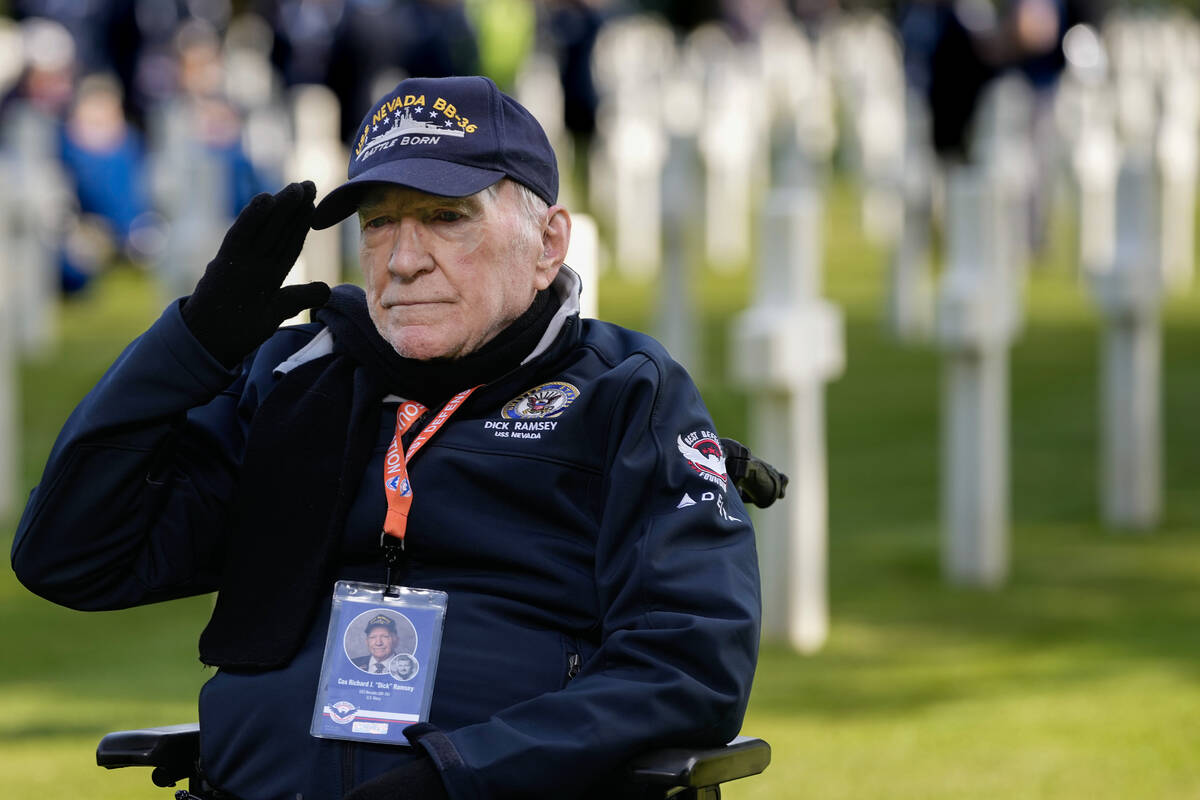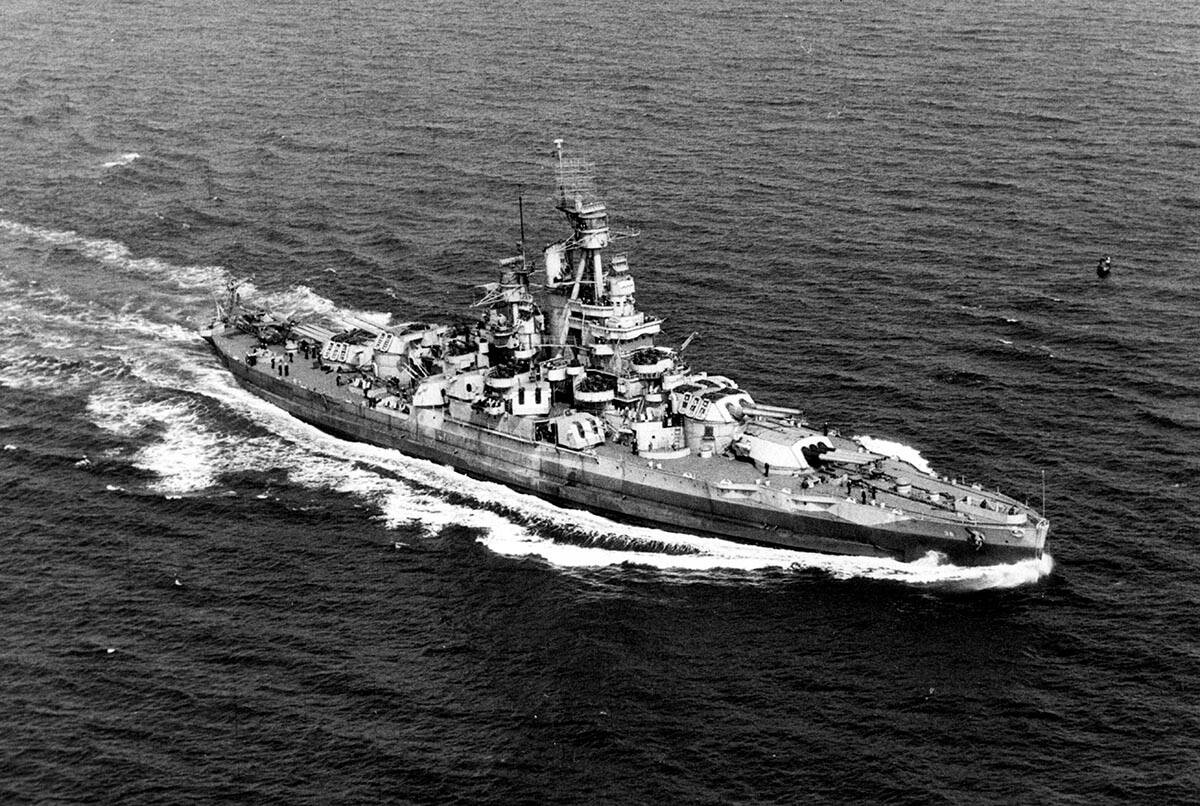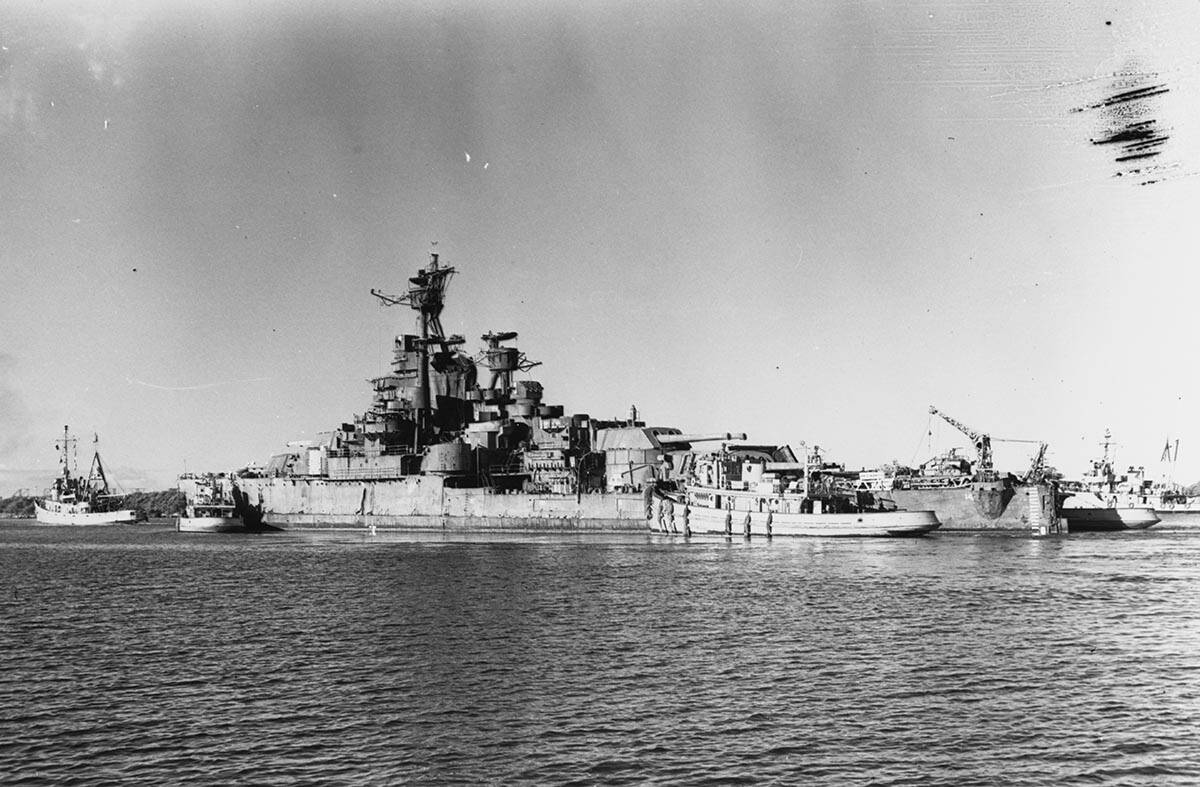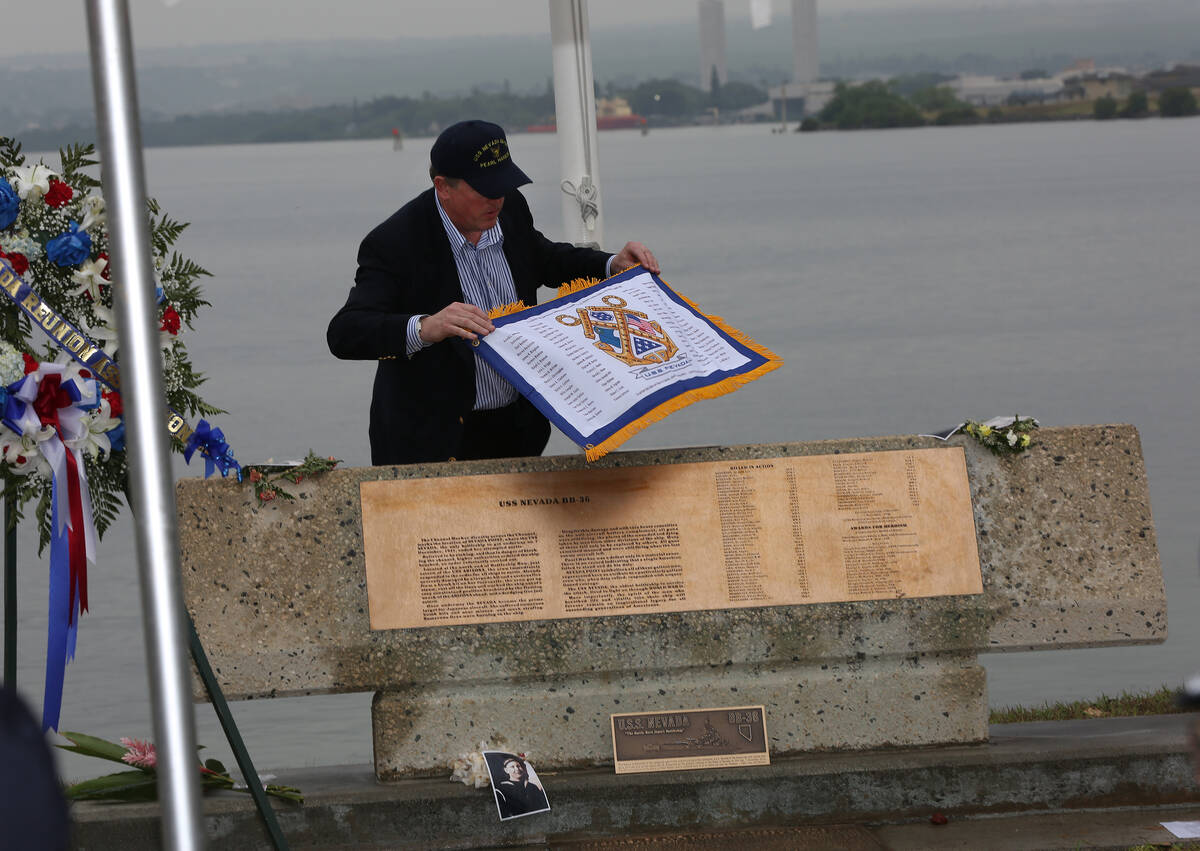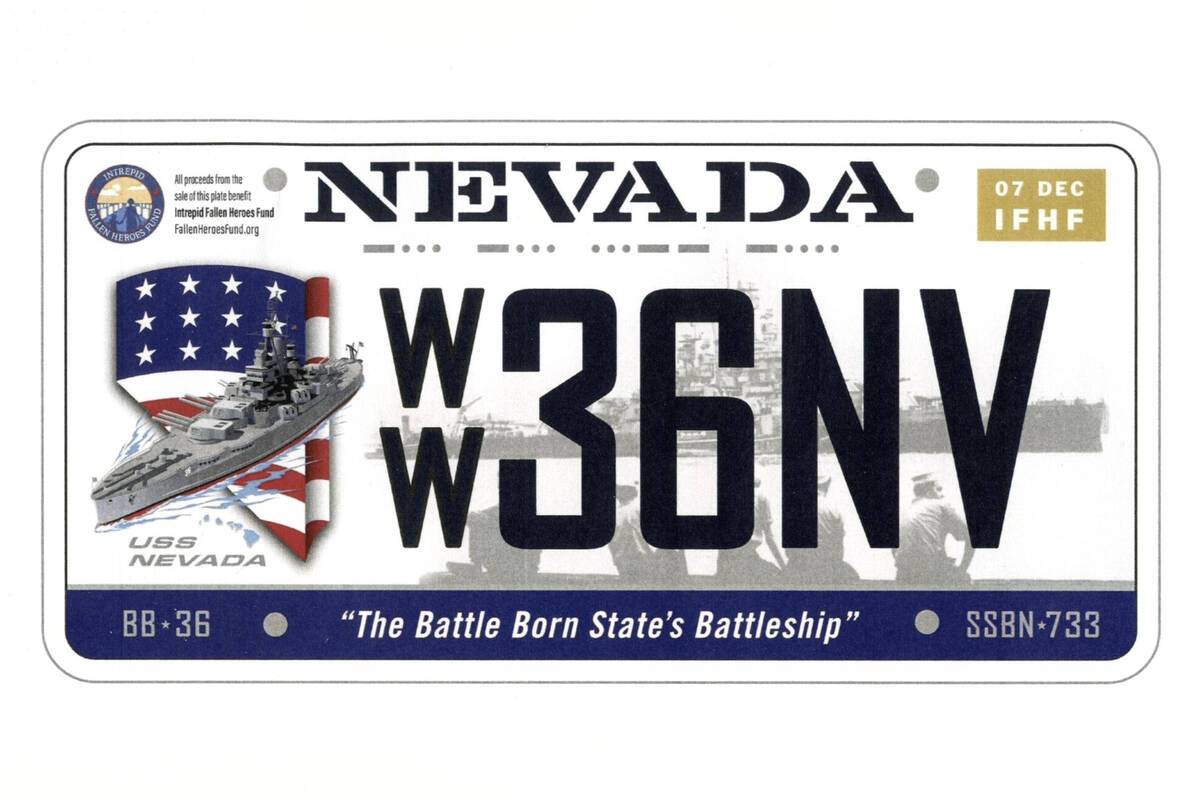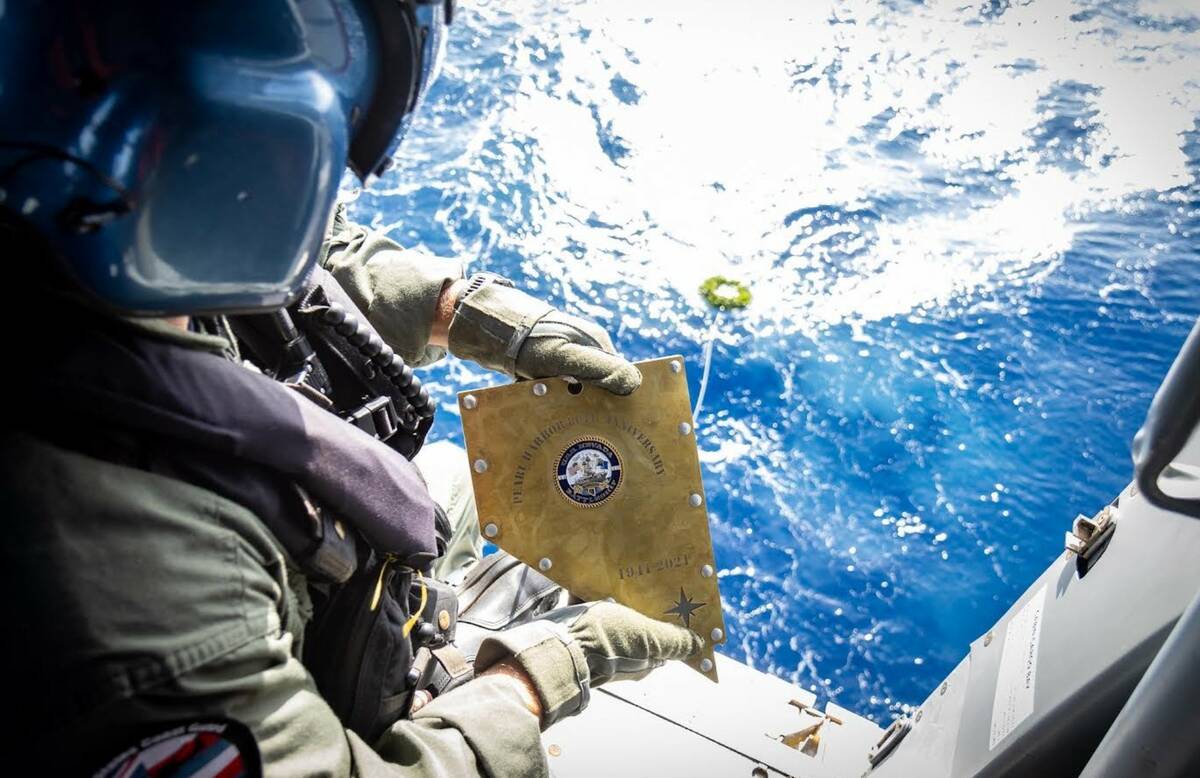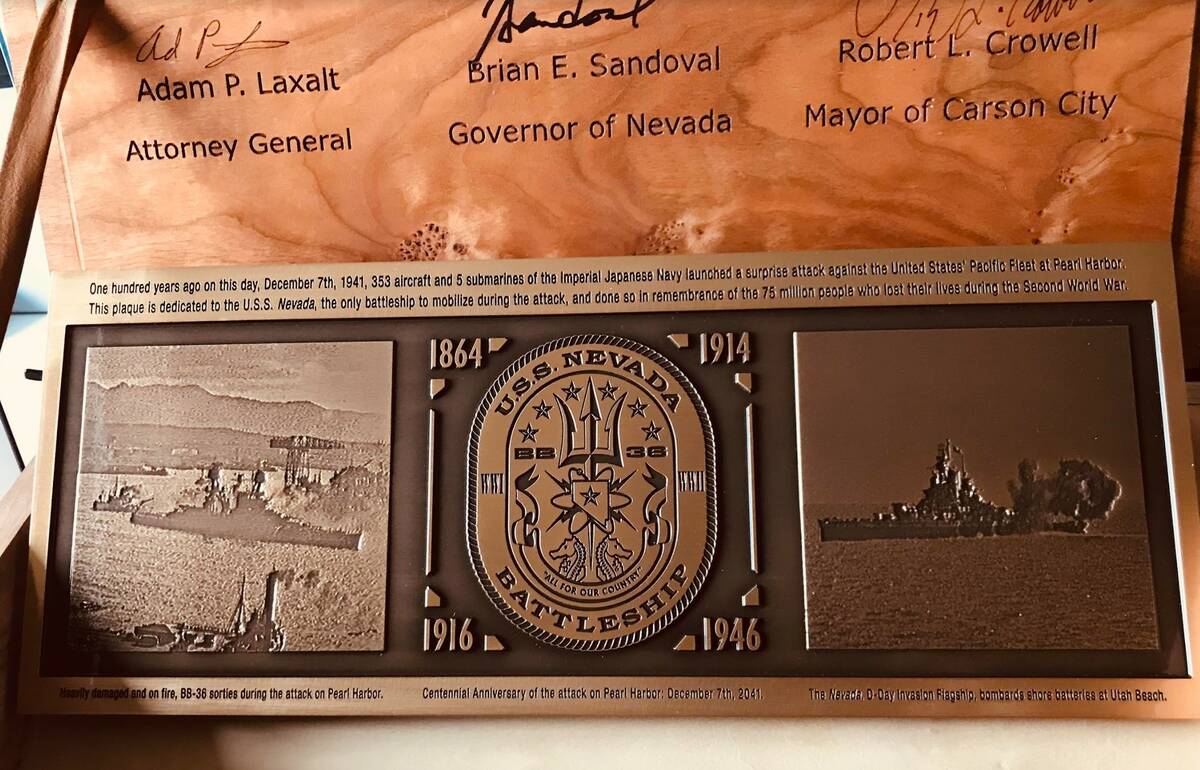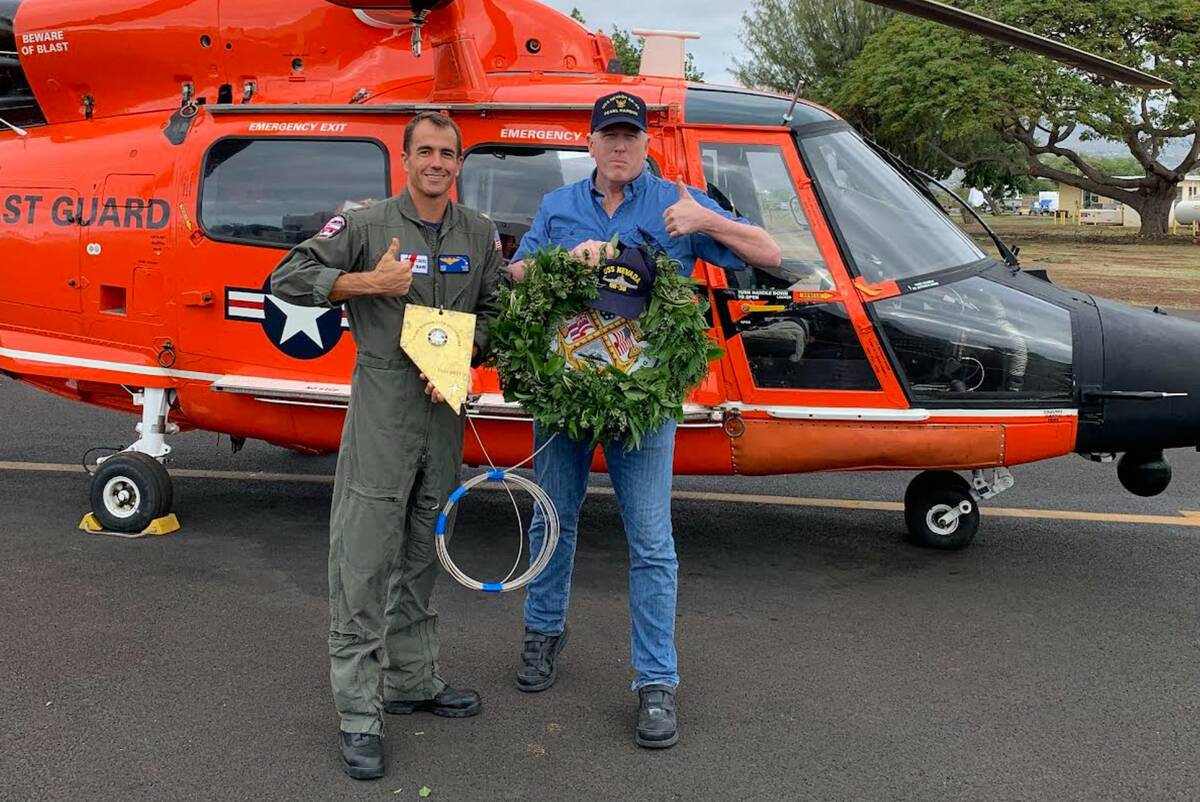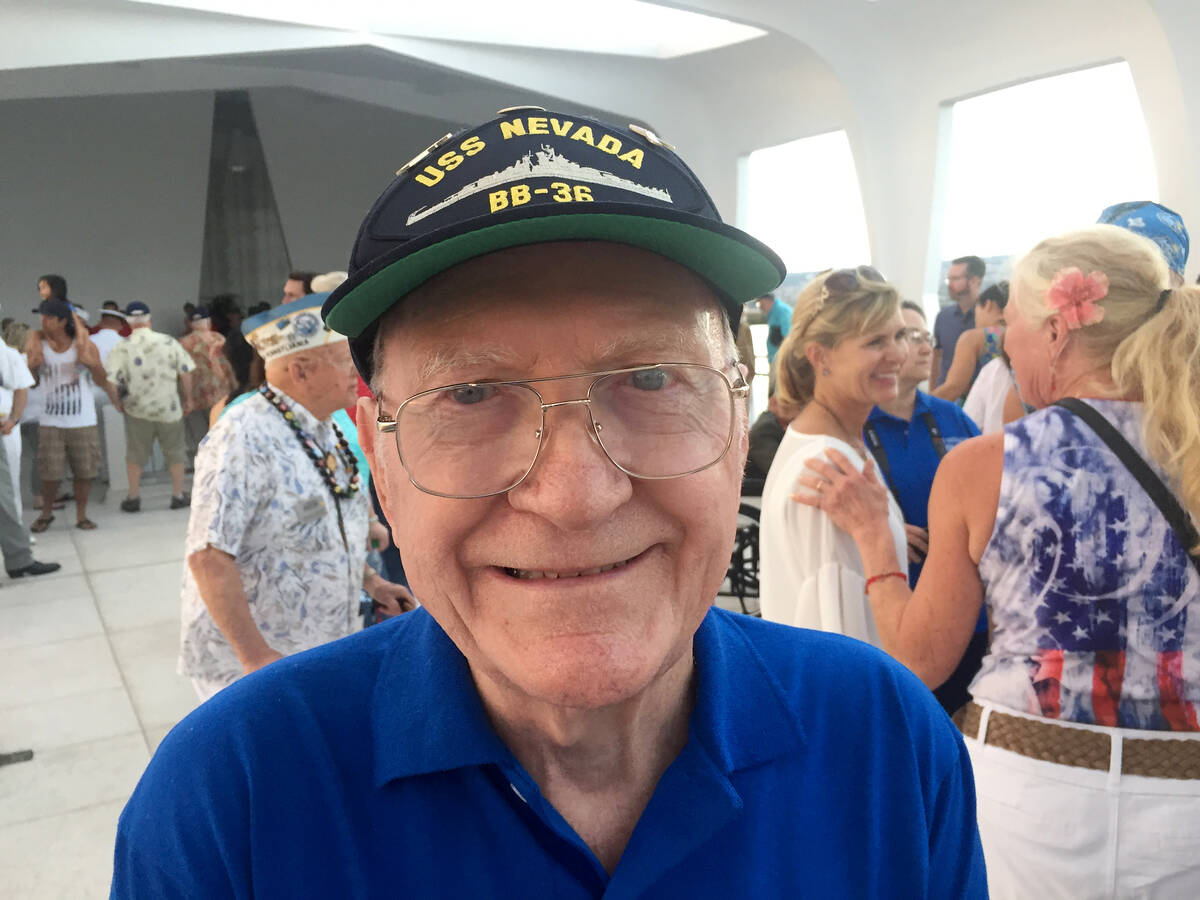‘It feels very lonely’: 80 years after D-Day, only 2 USS Nevada crew members remain
Dick Ramsey was on board the USS Nevada off the coast of France during the Allied invasion on D-Day, June 6, 1944 — 2½ years after the battleship nearly sank in shallow water at Pearl Harbor during the infamous attack by Japanese airplanes.
Painstaking repair work had placed the durable Nevada, badly damaged by bombs and a torpedo, back into action. Ten 14-inch, .45-caliber guns were used in the Allies’ Operation Neptune on D-Day to bombard German artillery at Utah Beach as well as cannons and tanks miles inland, Ramsey said.
Built just before World War I, the USS Nevada was the only battleship to have fought on D-Day and was present at Pearl Harbor in Hawaii during Imperial Japan’s attack on Dec. 7, 1941, said Ramsey, a resident of Long Beach, California.
‘It feels very lonely’
Now 80 years after D-Day, Ramsey, a former coxswain for the U.S. Navy, is one of the only two living crew members of the Nevada.
The other, Charles Sehe, 101, the only person to serve on the Nevada both during the Pearl Harbor attack and on D-Day, is in hospice care in Minnesota, he said.
“It feels very lonely,” said Ramsey, who at age 100 is talkative and spry. “We’re down to two people. We had many reunions.”
On Wednesday, one day before the 80th anniversary, Ramsey arrived at Normandy — his third trip there to celebrate D-Day — for the first of two days of ceremonies commemorating the attack against the German armed forces.
“Because there are many wonderful ceremonies taking place here, it is incredibly emotional,” Ramsey said in an email sent by a friend in France.
He noted that he visited museums and the Pegasus Bridge.
“There are a lot of beautiful places here,” Ramsey said. “Even with all of the crowds, I was able to see people who I had met the previous year. And I continue to meet lovely people. The younger generation takes good care of us.”
The Pegasus Bridge, a famous strategic crossing over the Caen Canal captured by British airborne troops, “paved the way for the Allied invasion of Europe” and “was the first engagement of D-Day, the turning point of World War II, ” wrote the late historian Stephen E. Ambrose in his 1988 book “Pegasus Bridge: June 6, 1944.”
‘Honor of firing the first shot’
Ramsey, who received the Foreign Legion of Honor award from France, said he still has a copy of the letter sent by Gen. Dwight D. Eisenhower telling troops how significant the Allied landings were.
Related: ‘Sky aglow with fire and death’: Pilot’s letter describes D-Day landing
“Eisenhower had requested some battleships with big guns,” Ramsey said in an interview this week with Raleigh, North Carolina-based WNCN-TV Channel 17. “So they sent them the three oldest battleships in the Navy — the Arkansas, the Texas and the Nevada.”
Outside Utah Beach, U.S. Navy Rear Admiral Morton Deyo ordered the Nevada to open fire, Ramsey told the news station. “The Nevada had the honor of firing the first shot,” Ramsey said.
The Nevada was honored in April with the debut of a commemorative Nevada state license plate, called “The Battle Born State’s Battleship,” designed by Las Vegas resident John Galloway, who is head of the USS Nevada Remembrance Project.
‘Where the soul of the ship is’
Galloway, asked about the importance of the license plate, only the third U.S. battleship commemorated on a state license plate, cited what Sehe once said — that visiting the state of Nevada was more important than Pearl Harbor in Hawaii and the D-Day landing in France.
“That (state) is where the soul of the ship is,” Galloway said. “That’s where the heart is.
“It’s a way to teach,” he added. “The fact that the ship and the state are intertwined, I can make a teaching moment for our brave ancestors.”
Galloway also designed, and covered the expenses for, a plaque honoring the USS Nevada at the state’s memorial to the battleship in Carson City. It was mounted there in 2016, the 100th anniversary of the ship’s placement into active service. He also had another plaque prepared to celebrate the Nevada’s service for the 100th anniversary of the Pearl Harbor invasion in 2041.
For D-Day, Admiral Deyo chose the Nevada to serve as the “fighting flagship” where the officer would command Operation Neptune and also be directly involved by firing its guns at German shoreline defenses as Allied troops landed at Utah Beach, Galloway said.
During the shoreline battle, the Nevada’s guns took out 71 German tanks with the help of inland spotter planes, according to Galloway.
‘Many, many men shot down’
Ramsey said that in the early morning of D-Day, airplanes from the 101st and 82nd Airborne Divisions of the U.S. Army Air Corps dropped paratroopers behind enemy lines on France’s Normandy region with the Nevada training its naval guns toward German targets.
“We became the field artillery for the 101st and 82nd,” Ramsey said. “We arrived at 1 a.m. in the morning. We could see all the paratrooper planes coming and going.”
He witnessed in the darkness of that night, amid German anti-aircraft fire, the horror of planes, carrying units of paratroopers, exploding and crashing, Ramsey said.
“It looked like a giant kaleidoscope. That sky was all lit up,” he said. “There were many, many men shot down who never got out of their planes.”
Aboard the Nevada, Ramsey was on the third-deck powder magazine, passing out rounds of ammunition requested for use in the ship’s guns, including armor-piercing rounds to hit German tanks and “star shells” that exploded in the air to illuminate targets at night.
Eighty straight hours
Ramsey was one of more than 2,000 sailors on the ship who would remain at their battle stations for 80 straight hours, while the Nevada’s four gun turrets fired hundreds of salvos of 1,000-pound projectiles that could hit and destroy a German tank up to 17 miles away, he said.
Not only was it exhausting, but the air circulation into the ship also had to be shut off, by closing air ducts, every hour as a precaution to “maintain watertight integrity” and prevent water from flowing inside, Ramsey said.
“It made it very hot,” he said.
Pilots from spotter planes would fly inland, view German targets and radio in the coordinates from grids on maps to direct the ship’s cannon fire and call in corrected coordinates when the shells missed the targets, Ramsey said.
While the ship fired at and destroyed seawalls and other German targets, with a 51 percent accuracy rate — including knocking out 90 German tanks overall — “the USS Nevada was not hit at all” despite being a stationary target, Ramsey said.
The Nevada left Utah Beach and turned to firing upon Omaha Beach, where the landing American troops “were getting slaughtered” by German machine gunfire, he said.
After the Allied invasion, which included American, British and Canadian armies, eventually succeeded in France and took on the German army, Ramsey and the Nevada soon shifted to the Eastern Theater of the war, taking on Japan at the bloody battle of Iwo Jima and the three-month siege at Okinawa, he said.
“For 16 days we fired on Mount Suribachi (on Iwo Jima island),” he said.
Ramsey served for 34 months on the battleship during World War II.
At the end of the war, Ramsey said he turned down an offer to re-enlist in the Navy, deciding to return to his old job at the Brooklyn Naval Yard, where he worked on the aircraft carrier USS Franklin and later became a lithographer for a newspaper, he said.
“Why me?” he mused of his survival. “Ah well, as they say in France, ‘C’est la vie.’ ”
Contact Jeff Burbank at jburbank@reviewjournal.com or 702-383-0382. Follow him @JeffBurbank2 on X.



